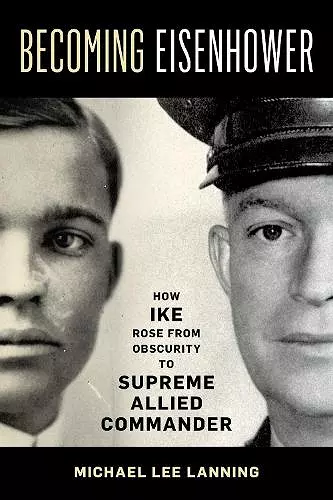Becoming Eisenhower
How Ike Rose from Obscurity to Supreme Allied Commander
Format:Hardback
Publisher:Stackpole Books
Published:15th Dec '24
£25.00
Supplier delay - available to order, but may take longer than usual.

When Dwight Eisenhower graduated from West Point in 1915, few would have predicted he was destined for greatness. A middling student, he was denied his first choice of posting, missed overseas service in World War I, spent a dozen years as a major, and never commanded a unit larger than a battalion. Yet the young officer made the most of the opportunities he was given, made a lasting impression on superiors including George Marshall, and eventually gained a reputation as an excellent staff officer with a knack for administration, loyalty, and “getting along.” Eisenhower was promoted to colonel in March 1941 and, sixteen months later, was a lieutenant general in command of the European Theater of Operations. His rise through the ranks was first painfully slow, then meteoric. It is one of the great, and most important, stories in military history, and Michael Lee Lanning tells it vividly, with an eye for the dramatic turning points in Eisenhower’s rise.
The West Point class of 1915 was “the class the stars fell on.” Fifty-nine graduates became generals during World War II, but none of that was clear at the time, especially not for the young Dwight Eisenhower, who graduated 61st in a class of 164. He failed to make the baseball team, but made the football team, only to see an injury end his playing career, and was known as a card player and prankster. Denied his request for service in the Philippines, Eisenhower was sent to Texas, where he spent a good bit of his time coaching football. Later denied his request to fight in France, he spent World War I training a tank unit near Gettysburg.
During the 1920s into the early 1930s—lean years for the army during which promotions came slowly and many officers quit the service—Eisenhower started to catch the eye of superiors and earned positions under the U.S. Army’s leadings lights, including Fox Conner, John Pershing, and Douglas MacArthur, whom he served under during pivotal years in the 1930s, from the Bonus March to the Philippines.
By the late 1930s, as war broke out in Europe, Eisenhower’s star was on the rise. After serving in a series of staff positions—regimental executive officer, then corps and army chief of staff—Eisenhower joined the General Staff...
ISBN: 9780811773874
Dimensions: 237mm x 157mm x 23mm
Weight: 522g
288 pages